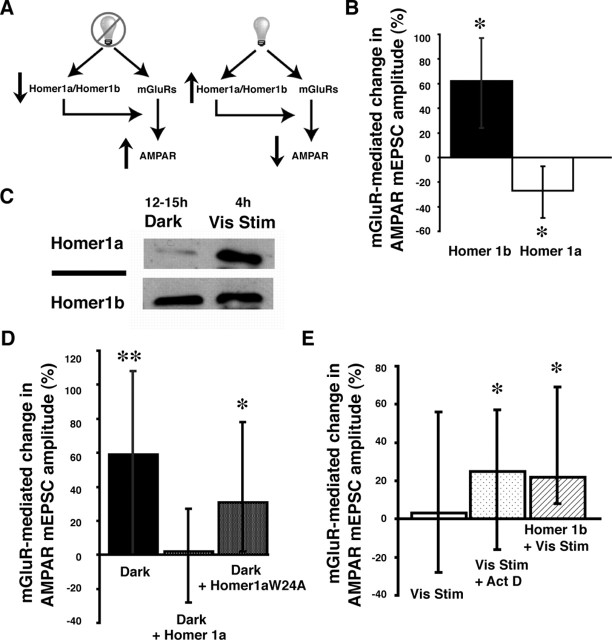Figure 2.
The ratio of Homer1a/Homer1b modulates mGluR-mediated plasticity of AMPAR synaptic transmission. A, Model of Homer1a/Homer1b regulation of mGluR-mediated changes in AMPAR synaptic transmission. After 12–15 h dark, Homer1a/Homer1b is low and mGluR activation enhances AMPA mediated transmission. With visual stimulation, Homer1a/Homer1b increases, reducing the mGluR-mediated increase in AMPAR synaptic transmission. B, Exogenous Homer1b expression significantly increased mGluR-mediated plasticity of AMPAR responses (∗p < 0.03). Exogenous Homer1a significantly decreased AMPA mEPSC amplitude after DHPG application (∗p < 0.01; n = 20–24 cells in each condition). C, Visual stimulation increases Homer1a protein expression in tadpole optic tecta. D, Expression of exogenous Homer1a blocked the increase in AMPA mEPSC amplitude in neurons from tadpoles in the dark. Expression of the mutant Homer1aW24A did not block mGluR-mediated increases in AMPA mEPSC amplitude (∗p < 0.02; n = 19–26 cells in each condition). E, Both actinomycin D (∗p < 0.05) and ectopic expression of Homer 1b (∗p < 0.01) during visual stimulation permitted the mGluR-mediated increases in AMPA mEPSC amplitude (n = 19–26 in all conditions).

